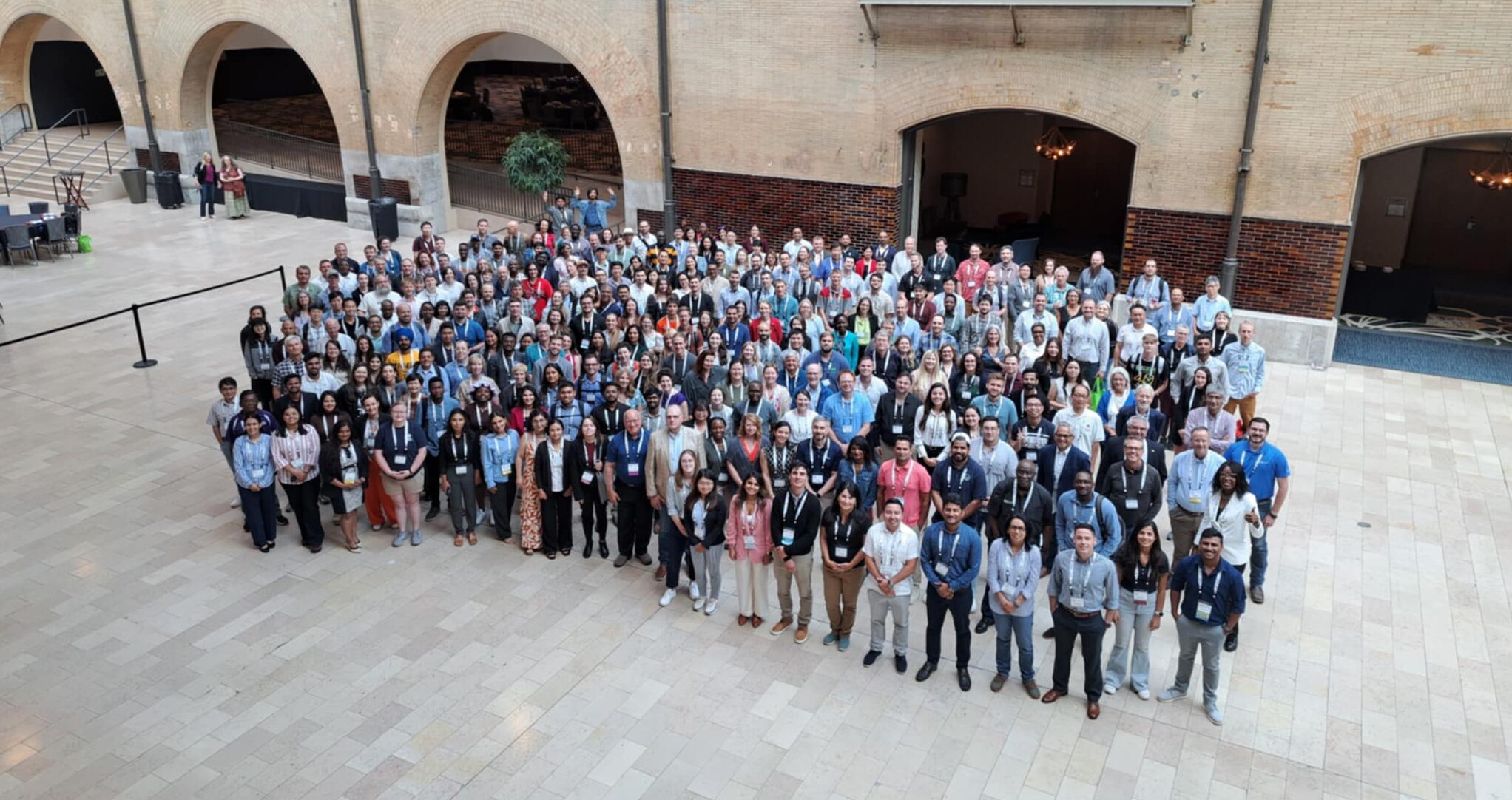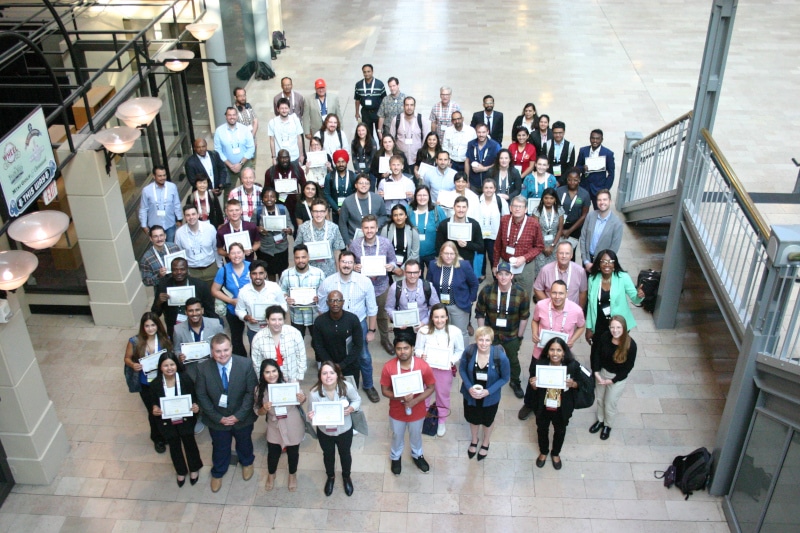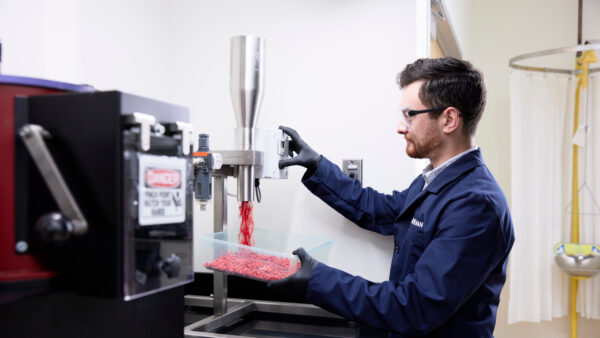Reinventing plant breeding can encompass a variety of innovations and advancements aimed at addressing contemporary challenges and leveraging new technologies. While integration of advanced technologies is important, consumer-centric approaches are crucial as well, attendees heard yesterday on Day 3 of the 2024 meeting of the National Association for Plant Breeding in St. Louis, MO.
Breeding by design is an ambitious approach that seeks to harness the power of genetic knowledge to precisely control traits in crops, leading to more efficient and effective breeding methods. This vision, driven by a deeper understanding of the biology behind important traits, promises to revolutionize the way we cultivate our food.
That’s according to Kristin Bilyeu, research molecular biologist at the USDA-ARS in Columbia, MO.
At the heart of this approach is a fundamental shift from traditional computational breeding methods to a more nuanced, biology-informed strategy. It requires comprehensive knowledge about the genes that influence specific traits and the ability to select the optimal versions of these genes. This deeper insight into genetic mechanisms can dramatically enhance the breeding process, making it more targeted and efficient, she says.
“For the past two decades, my focus has been on soybean seed composition,” she said in an interview with Seed World. “I’ve been fortunate to discover numerous genes responsible for valuable changes in seeds throughout the value chain. With our current understanding, we can rapidly and effectively convert elite germplasm into varieties with the desired characteristics. This is the essence of breeding by design — we select for the traits we want while avoiding unwanted characteristics.”
One notable breakthrough in this field involves the ability to characterize genes that control specific phenotypes. Rather than dragging along unwanted genetic material from native traits during the breeding process, researchers can now use genome editing technologies more effectively. “Genome editing is a powerful tool, but it requires precise targets. By understanding which genes impact important traits, we can create these targets and achieve desired outcomes more efficiently,” Bilyeu adds.
This approach not only streamlines traditional breeding methods but also opens the door to innovative techniques like genome editing.

Data is King
Of course, to do that, good data is paramount. Yet, one of the biggest challenges remains getting accurate data.
“When making critical decisions, you need to ensure that every choice is grounded in 100% factual information. This means not only gathering correct information but also being able to act on it quickly,” says Amanda Hulse-Kemp, computational biologist based in Raleigh-Durham, NC. She spoke as the 2023 Early Career Scientist Award winner.
Her current research revolves around developing high-quality genomes, genotyping technologies and tools to integrate into breeding programs to support predictive breeding strategies on nearly 20 crops.
“Our process involves collecting data efficiently, organizing it in a usable format, and making informed decisions quickly. While all the necessary tools are available, the real hurdle is integrating them seamlessly. Despite the advancements in technology, we haven’t yet connected these tools in a way that allows for continuous, efficient operation,” she says.
However, her team is on the right path.
“The secret to overcoming this challenge lies in enhancing our ability to collect, process, and utilize data more effectively. By achieving better integration and connectivity, we can significantly improve our decision-making capabilities, paving the way for a more efficient and productive future in agriculture.”

The Crunch Heard ‘Round the World
Of course, while data is crucial, it’s often consumer preferences that can make or break the success of a crop variety.
When you bite into a Honeycrisp apple, its explosive crunch and juicy release are reminiscent of biting into a perfectly ripe peach, with juice running down your chin. This exceptional texture and the balance of sweet and tart flavors set Honeycrisp apart, raising the bar for what an apple-eating experience can be, and making it one of the world’s top apple varieties.
Yet, as delightful as Honeycrisp is to eat, it’s equally challenging to grow and handle. This variety demands more from growers in terms of care and resources, impacting their returns.
Despite these challenges, Honeycrisp has dominated the market for the past 25 years, consistently commanding a premium price. It was bred by Jim Luby and his team at the University of Minnesota. Luby spoke yesterday as the 2023 winner of the NAPB’s Lifetime Achievement Award.
Despite its massive success, the apple market is evolving. Supply is finally catching up with demand, something experts anticipated over a decade ago. As prices for Honeycrisp start to stabilize and production costs remain high, growers are seeing their returns diminish. The need for varieties that offer a similar eating experience but are easier and more cost-effective to grow is becoming apparent.
“Looking ahead, the future of apple innovation lies in breeding new varieties that capture the most-loved attributes of Honeycrisp — its crunch, juiciness, and flavor — while also addressing the practical needs of growers. We can expect apples with even more intense flavors and improved grower returns to emerge, ensuring that the legacy of Honeycrisp continues to inspire and elevate the apple industry.”
For now, Honeycrisp remains a testament to the heights that apple breeding can achieve, setting a high standard for texture and taste. The journey of this remarkable apple reminds us that the intersection of consumer delight and agricultural practicality is where innovation often comes from, he adds.
“In fruit breeding, it’s crucial to remember our multiple stakeholders, with the consumer eating experience being paramount. Even if a variety is the easiest or cheapest to grow, it won’t succeed unless it provides an enjoyable experience for consumers.”












